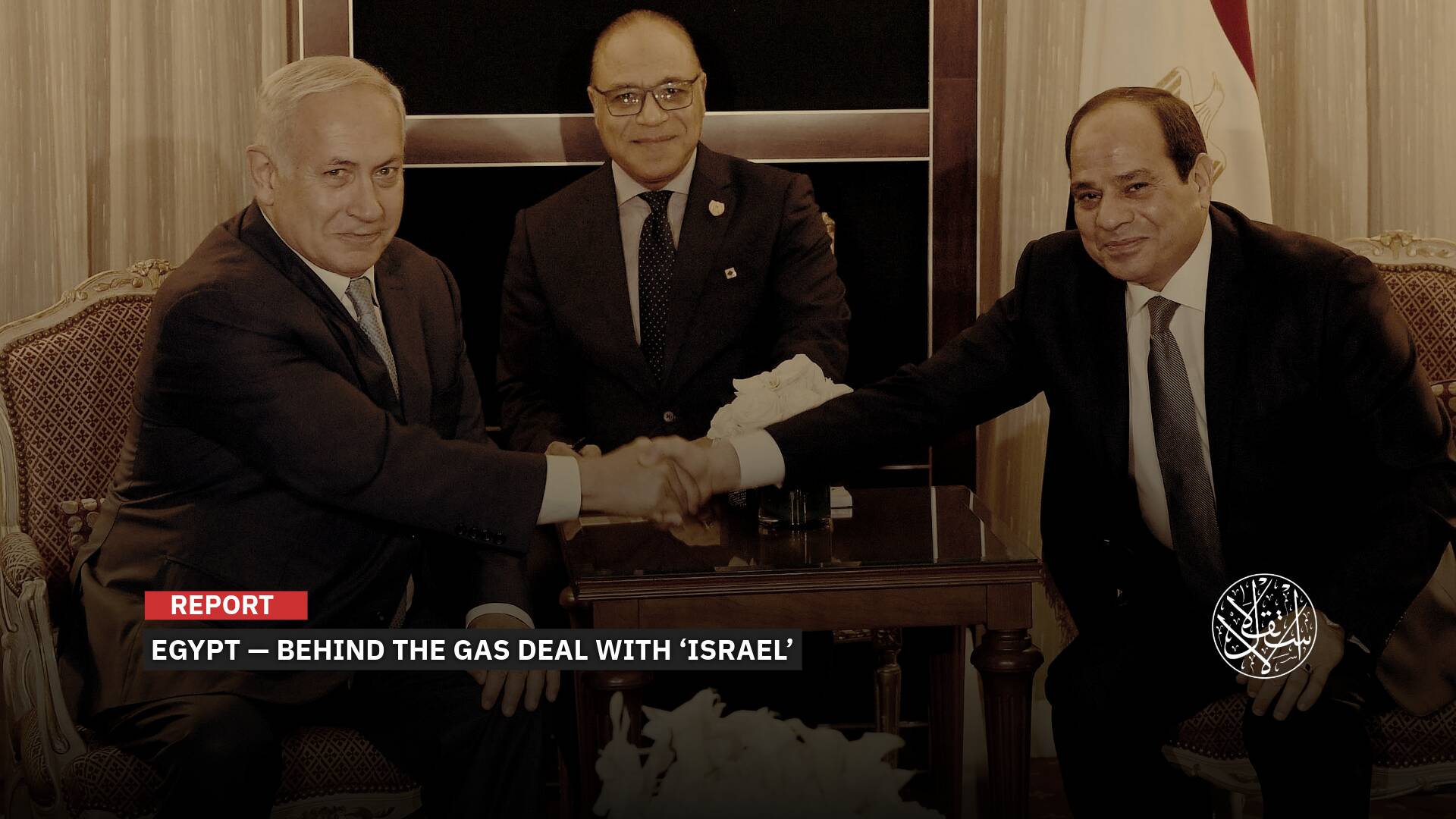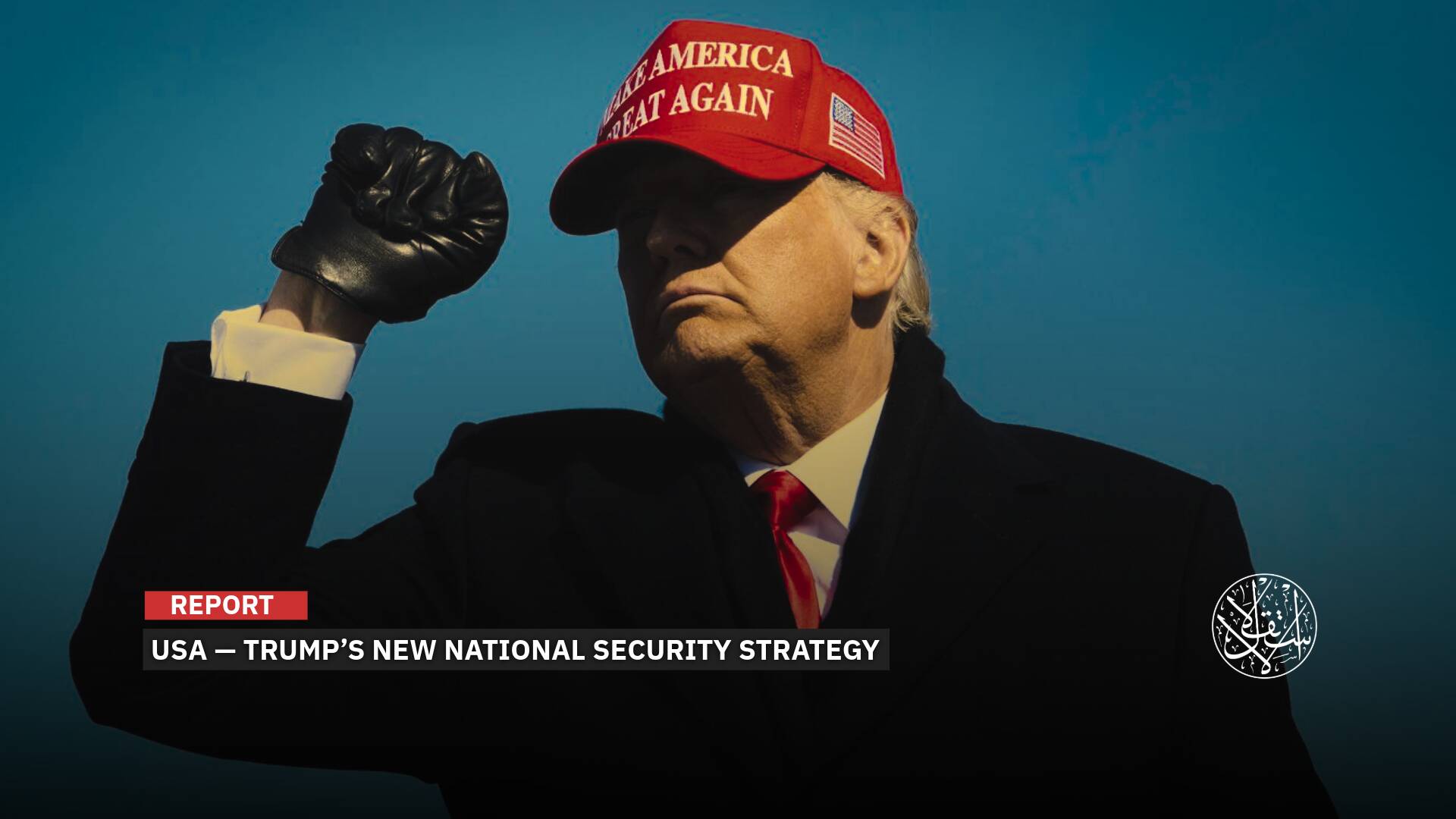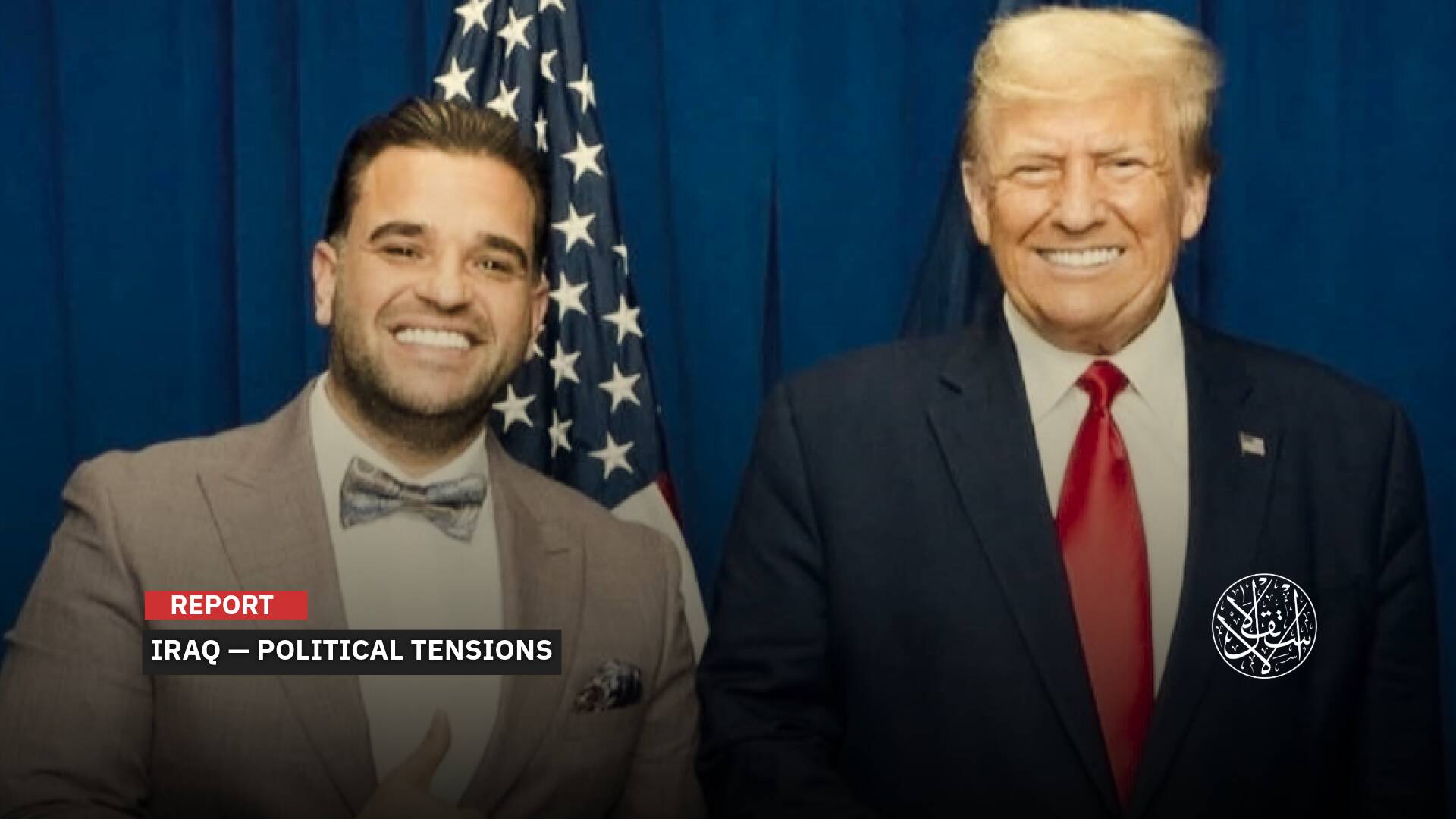Ahead of His Gulf Visit: Will Trump Force ‘Israel’ to Halt Its War on Gaza?

“Israel” might be forced to accept a deal under pressure from Trump.
Amid faltering negotiations between “Israel” and the Palestinian Resistance Movement (Hamas), sources close to the talks say Donald Trump may pressure “Tel Aviv” to soften or drop its demands ahead of his anticipated visit to the Middle East.
Sources told Al-Estiklal that the latest round of Cairo negotiations collapsed after “Israel” refused to halt its assault on Gaza and introduced a new demand: the disarmament of Hamas.
The Hamas delegation reportedly left Cairo after talks on a ceasefire and prisoner exchange hit a dead end.
Trump's Pressure?
Multiple sources believe “Israel” could be forced to accept a deal under pressure from Trump, who is now focused on sealing a normalization agreement between Saudi Arabia and the Israeli Occupation before his visit to the Kingdom and other Gulf states in May 2025.
According to Palestinian, Egyptian, and Arab sources consulted by Al-Estiklal, Trump wants the Gaza war wrapped up before landing in Riyadh.
The reasons, they say, are twofold: first, to create a calm environment ahead of multi-trillion-dollar deals with Saudi Arabia ($1 trillion) and the UAE ($1.4 trillion), as Trump moves to fill U.S. coffers after suspending global tariffs for three months.
Second, Trump is reportedly eager to revive his normalization push between Saudi Arabia and “Israel,” this time with no pretense of linking it to a future Palestinian state. Instead, he's proposing bilateral security deals that would place the Saudi monarchy under a U.S. protective umbrella, a harder sell while the bombs are still falling on Gaza.
Back in February, during a visit by Israeli Prime Minister Benjamin Netanyahu to the White House, Trump admitted normalization could be delayed due to the ongoing war. Yet he insisted that Riyadh hadn't demanded a Palestinian state in return. Saudi Arabia quickly shot back with a statement reaffirming its long-held position: no normalization without statehood.
Understanding Trump’s endgame, Netanyahu appears to be playing his final cards. According to Yedioth Ahronoth (April 9), the Israeli leader was given a three-week deadline by Trump to end the war before his Gulf trip.
Netanyahu’s latest terms, delivered to Egyptian mediators in Cairo, include Hamas disarmament and the expulsion of several of its leaders from Gaza. A senior Hamas official told Al-Jazeera that the group rejected the proposal ouright.
During the Cairo talks, the Israeli Occupation reportedly refused to commit to ending the war or withdrawing its forces (the two core demands of Hamas) in exchange for releasing half of the Israeli hostages (24 out of 59). Instead, it offered only a temporary ceasefire and food aid.
The implied formula: “calm for aid,” followed by a short lull, the hostage release, and then a renewed offensive. Hamas, according to its officials, sees this as a trap designed to win days of quiet in exchange for surrendering its leverage.
For Trump, the war is becoming a liability, a lingering obstacle as he seeks to land massive Gulf investments and relaunch his Saudi-Israeli normalization vision. With little time left before his trip, sources say Trump may have no choice but to push Netanyahu to shut the war down.
Yedioth Ahronoth quoted Israeli officials as saying: “It seems the American president is running out of patience and working on a comprehensive deal that could soon lead to the release of all hostages and an end to the Gaza war.”

What's the Way Out?
According to sources, two major developments are ramping up the pressure on Israeli Prime Minister Benjamin Netanyahu to eventually accept a ceasefire deal.
First: Mounting internal dissent inside “Israel.” Military refusal is spreading, fueled by accusations that Netanyahu is prolonging the war for “political” ends, even at the cost of hostage lives. A wave of petitions and open letters from elite sectors, air force pilots, intelligence officers, paratroopers, doctors, and academics, have urged an immediate end to the war to save the hostages. Notably, three former Mossad chiefs, Danny Yatom, Efraim Halevy, and Tamir Pardo, have joined the call.
Second: Hamas’s recent statement that it lost contact with the group holding Israeli-American soldier Edan Alexander after a direct Israeli airstrike hit his location. Just days earlier, Alexander accused the Israeli military of deliberately targeting hostages. The incident could spark outrage in Washington, particularly from Donald Trump, who may now feel compelled to push for an end to the war.
Sources suggest Trump might propose a broad solution to the Gaza war, possibly advancing a prisoner exchange deal in return for halting the offensive and launching a phased Israeli withdrawal, before his scheduled visit to Saudi Arabia.
Hamas, for its part, continues to hint that a ceasefire could still be reached before mid-May, coinciding with Trump’s planned tour of Saudi Arabia, the UAE, and Qatar, despite recent pessimism around the latest round of negotiations.
A report by the Carnegie Endowment for International Peace, published on April 14, 2024, highlighted this very connection between Gaza and Trump’s Middle East trip. The report noted that, even if Saudi Arabia doesn’t join the Abraham Accords, Trump will have to factor in the Gaza issue, especially if “Israel” doesn't at least offer nominal support for a two-state solution.
Written by former Jordanian foreign minister Marwan Muasher, the report underscores Riyadh’s growing influence in Washington. Saudi leaders, it says, are keenly aware of the global fragmentation accelerated by Trump-era policies. Trump, in turn, understands that Riyadh’s stance on Gaza and its opposition to the Israeli offensive cannot be ignored.
As Trump eyes major Saudi concessions, including a civilian nuclear program, a binding U.S. defense pact, and advanced weapon sales, he must also consider domestic and regional sensitivities.
In this context, France has floated a proposal for Israeli-Saudi normalization, notably without requiring “Israel” to recognize a Palestinian state, according to Haaretz (April 16, 2025). The French initiative envisions a comprehensive deal: ending the war on Gaza, releasing Israeli hostages, a full Israeli withdrawal from the Strip, and normalized ties between Tel Aviv and Riyadh.
Paris is reportedly aiming to craft an agreement that satisfies Saudi concerns while allowing “Israel” to join the process without formally committing to a Palestinian state, so long as it agrees to a truce in Gaza, frees the hostages, and expands humanitarian aid.

Trump’s Tariffs Backfire on Riyadh
As Donald Trump prepares for his first Gulf tour in his second term, aimed at securing the $1 trillion investment pledge from Crown Prince Mohammed bin Salman, his own tariff policies are proving a major stumbling block.
Trump’s sweeping tariffs on countries around the world, especially China and Europe, triggered economic uncertainty that dented global oil demand and sent prices tumbling, undermining Saudi Arabia’s ability to bankroll the promised trillion.
According to Bloomberg (April 7, 2025), Trump’s tariffs and sliding oil prices are complicating Saudi Arabia’s $1 trillion plan to invest in the U.S. They’re also jeopardizing the Kingdom’s Vision 2030 agenda, which is already under financial strain, facing losses and scaled-back projects.
On April 6, the Saudi stock market shed over half a trillion riyals in value, with Aramco leading the downturn, its shares dropping 6.2%. Aramco lost more than $90 billion in market value at one point, illustrating the company’s vulnerability to global sell-offs and plunging crude prices.
Trump’s tariffs have pushed oil prices down to around $60 per barrel, a 13% drop, hurting Gulf oil revenues just as Trump expects Saudi Arabia and the UAE to fulfill their massive investment commitments during his visit.
Both The Wall Street Journal and The Guardian confirmed in early April that Trump’s tariff war has financially strained Riyadh, raising doubts over whether it can deliver on its promises.
Before Gulf capitals voiced their frustration, Jonathan Panikoff, Director of the Scowcroft Middle East Security Initiative, warned via the Atlantic Council that Trump’s tariffs will hit Arab energy producers hard. On April 3, he said even if not directly, falling oil revenues will hurt the financial pledges Saudi Arabia and others made to the U.S. president.
In a sign of damage control, Trump temporarily suspended the tariffs for three months, a move many U.S. outlets interpret as a bid to ease Saudi losses ahead of his visit.
Analysts believe Trump may need to offer sweeteners, defense pacts, arms deals, or even a political gesture like brokering a Gaza ceasefire, to salvage the trillion-dollar deal and secure a smooth Gulf tour.

Trump’s Tariff Blowback Hits U.S. Oil Sector
American media have highlighted another reason behind Trump’s decision to freeze his tariff plan: damage control for the very shale oil companies whose CEOs backed him in the election, hoping he would lower their production costs—which range between $30 and $90 per barrel.
Instead, they were blindsided. His tariff wars triggered a global oil price slump, driving prices below their production costs and pushing smaller shale firms into bankruptcy.
The Wall Street Journal (April 6, 2025) mocked Trump’s promise to lower energy prices, saying it wasn’t supposed to turn out like this, because the biggest losers from his energy pledge are the American shale oil companies.
“President Trump had vowed to lower energy prices,” the paper noted, but “his friends in the oil patch never dreamed he would do so by upending the global economy.”
Trump’s tariffs sent oil prices plummeting 14% in just two days, hammering U.S. shale and fracking firms, the Journal added.
The Guardian (April 7, 2025) echoed this, blaming Trump’s erratic policies and OPEC infighting for dragging oil prices down, and damaging the U.S. economy in the process.
With West Texas crude falling to around $60 per barrel, shale producers are now facing financial ruin amid a broader economic slowdown. According to Bloomberg (April 6), industry leaders have been pressing Trump for an urgent rescue plan to halt the collapse.
Shale oil extraction costs between $25 and $95 per barrel, far higher than conventional oil, which costs $10 to $20 to produce. That means current oil prices, under $60, are unsustainable for most U.S. shale companies, despite their early bets on Trump.
Bloomberg reported on April 4 that the drop in oil prices below $60 a barrel, driven in part by Saudi Arabia’s steepest price cuts in years, threatens the finances of oil-producing countries that depend on much higher prices to meet their budget needs.
The report indirectly pointed to Saudi Arabia’s $1 trillion investment pledge in the U.S., made at Trump’s request, and its urgent need to fund domestic projects like NEOM, which has already been significantly scaled back due to shrinking oil revenues.
Sources
- Hamas rejects Israeli ceasefire disarmament proposal, Palestinian official says
- Experts React: No MENA ally or adversary unscathed by Trump tariffs
- Saudi Arabia Has Outsized Influence in Washington. Can It Hold?
- Trump Promised to Lower Energy Prices—but It Wasn’t Supposed to Be Like This
- Volatility grips global stock markets as Trump insists on tariff ‘medicine’











